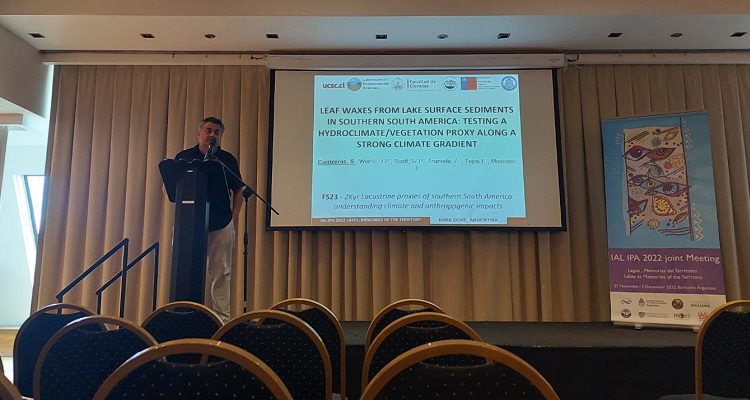As a way to share the findings with scientists from around the world, Dr. Sergio Contreras, an academic in the UCLA College of Sciences, organized a session to present the results…
As a way to share the findings with scientists from around the world, Dr. Sergio Contreras, an academic in the UCLA College of Sciences, organized a session to present findings from southern South America regarding his research related to the study of lakes through sediment. To determine the evolution of the past in the context of climate change and thus understand the phenomena that could occur in the future. The IAL IPA 2022 conference in Bariloche was a biennial event that brings together scholars from Europe, North America, Asia and more.
The title of the presentation was “Foliage wax in shallow sediment lakes in South America: Evaluation of vegetation and hydroclimatic index along a steep climate gradient”. Data from two Fondecyt projects have been combined to provide the most relevant results globally. “Using leaf wax compounds found in sediments at the bottom of lakes, climate changes can be measured and quantified, such as changes in precipitation, vegetation and temperature, for example,” Dr. Contreras noted.
In this way, it is analyzed and substantiated how the lake sediments between Biobío and Chiloé region record the past. The study took as an example the use of leaf waxes a sedimentary record from Lake San Pedro on the outskirts of Lonquemay and covers the last 2,000 years.
“There is a lot of precipitation and vegetation associated with the lakes. Most of the lakes studied have precipitation greater than 500 mm. per year, and we notice an increase in leaf wax in the south, where it rains more. In this way data is obtained that can be compared with previous phenomena And the future alike, ”added the academic, stressing that there is a close relationship between sedimentation and the chemical properties of the sediment.
Another point of interest within the participation in the meeting, related to the findings on work carried out with undergraduate students in environmental chemistry, which was carried out through the learning + service (A + S) methodology.
In this learning methodology, students and the community agree to work together to study and analyze environmental parameters, in this case, Lakes Junquillar and Posada in the Lomas Coloradas sector. In this way, they can generate a report, in a function consisting of sampling, laboratory analysis and, finally, making a presentation to the community and the entities involved.
The work carried out during the first semester of this year 2022 was under the subject of Fundamentals of Lake Science.

“Social media evangelist. Student. Reader. Troublemaker. Typical introvert.”

:quality(85)/cloudfront-us-east-1.images.arcpublishing.com/infobae/TEQF6EONZRFGLLLDIDD4L2O4EE.jpg)

:quality(75)/cloudfront-us-east-1.images.arcpublishing.com/elcomercio/XU32LRAEZFDDPNVHLFU3CKVBYY.jpg)



More Stories
Venezuela ranks fourth in female leadership in science and technology in Latin America
In Portuguesa and Sucre they explore the wonderful world of science
The university court overturns the expulsion of two teachers and a chemical sciences student